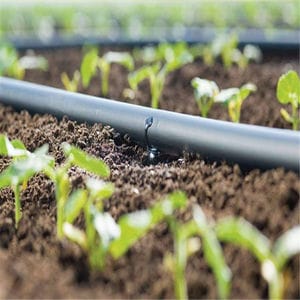- Wooden greenhouses have become an increasingly popular option for farmers in Kenya due to their affordability, versatility, and efficiency. In this article, we will explore the benefits of using wooden greenhouses for agriculture in Kenya.
- Wooden greenhouses are cheaper to construct compared to metallic greenhouses, making them a more affordable option for farmers in Kenya.
- The use of timber frames, which is readily available, makes the construction process easier and cheaper.
- Wooden greenhouses require minimal maintenance and supervision, further reducing costs.
- Wooden greenhouses have been shown to produce higher yields compared to traditional farming methods, providing a significant boost to food security in Kenya.
- The drip irrigation method used in wooden greenhouses ensures maximum usage of water, leading to higher crop yields.
- The use of ultraviolet-stabilized polymer films that have a lifespan of 3 to 6 years provides optimal light transmission and diffusion, leading to improved crop growth.
- Wooden greenhouses come in different sizes and can be customized to meet the farmer's specific needs.
- They can be used to grow a wide variety of crops, including vegetables, fruits, flowers, and herbs, making them a versatile option for farmers in Kenya.
- Environmental benefits:
- Timber is an eco-friendly material that can be sourced from sustainable forests, reducing the environmental impact of greenhouse construction.
- The use of polythene film in wooden greenhouses reduces the need for pesticides and herbicides, leading to a more sustainable farming practice.
- The return on investment from wooden greenhouses is higher compared to traditional farming methods, providing farmers with a more profitable option for their crops.
- The increased yields and higher-quality produce from wooden greenhouses also command a premium price in the market, providing farmers with a profitable market for their produce.
Conclusion: Wooden greenhouses provide farmers in Kenya with a cost-effective, versatile, and efficient option for growing crops. With the benefits of high yields, environmental sustainability, and profitability, it's no wonder that wooden greenhouses have become an increasingly popular option for farmers in Kenya.

Timber Frames: The main structural component of wooden greenhouses is timber frames made from treated wood to prevent termite attacks. Timber is readily available and eco-friendly.
Polymer Film Covering: Wooden greenhouses are covered with ultraviolet-stabilized polymer films that have a lifespan of 3 to 6 years. The polythene is about 0.005mm thick, and the design allows for high transmission and diffusion of light. The polythene can withstand extreme temperatures and is durable.
Drip Irrigation System: Drip irrigation is an effective way of delivering water and nutrients directly to the roots of the plants. Perforated plastic pipes are arranged in rows along the greenhouse, and water is delivered in small, precise amounts to conserve water.
Ventilation: Wooden greenhouses require proper ventilation to regulate temperature and humidity. A ventilation system can be installed using fans or louvers to control the flow of air.
Greenhouse Sizes: Wooden greenhouses come in different sizes, depending on the farmer's needs. The size of the greenhouse determines the number of seedlings that can be planted and the cost of construction.
Maintenance: Proper maintenance is essential to ensure the longevity of the greenhouse. Wooden frames should be treated regularly to prevent termite attacks, and the polymer film covering should be replaced every three to six years.
Profitable Plant Varieties Grown in Wooden Greenhouses in Kenya
Tomatoes: Tomatoes are one of the most profitable crops to grow in wooden greenhouses in Kenya. With the right care, a wooden greenhouse can yield up to 40 tons of tomatoes per acre, with each ton selling for around KES 50,000. Tomatoes grown in a wooden greenhouse are of higher quality and mature faster due to the controlled environment.
Capsicums: Capsicums, also known as bell peppers, are another profitable crop that can be grown in wooden greenhouses. A wooden greenhouse can yield up to 30 tons of capsicums per acre, with each ton selling for around KES 60,000. Capsicums grown in a wooden greenhouse are of higher quality and mature faster due to the controlled environment.
Cucumbers: Cucumbers are another profitable crop to grow in a wooden greenhouse in Kenya. A wooden greenhouse can yield up to 35 tons of cucumbers per acre, with each ton selling for around KES 60,000. Cucumbers grown in a wooden greenhouse are of higher quality and mature faster due to the controlled environment.
Roses: Roses are a high-value crop that can be grown in wooden greenhouses in Kenya. With the right care, a wooden greenhouse can yield up to 600,000 roses per acre, with each rose selling for around KES 10. Roses grown in a wooden greenhouse are of higher quality and have a longer lifespan due to the controlled environment.
Herbs: Herbs such as basil, mint, and coriander are also profitable crops to grow in wooden greenhouses in Kenya. These herbs can be sold to local restaurants, supermarkets, and individuals for a high profit margin. A wooden greenhouse can yield up to 7 tons of herbs per acre, with each ton selling for around KES 100,000.
A wooden greenhouse in Kenya can yield high profits when the right crops are grown and proper care is taken. By growing high-value crops such as tomatoes, capsicums, cucumbers, roses, and herbs, farmers can increase their profits and contribute to Kenya's food security.



.png)


 20%
20%



0 Reviews
Your rating